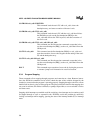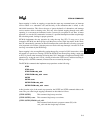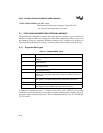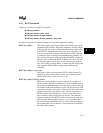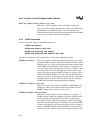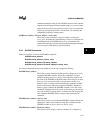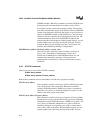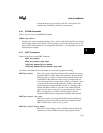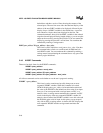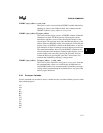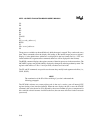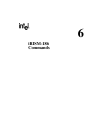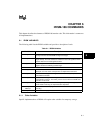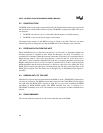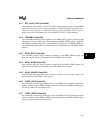
INTEL 186 EB/EC EVALUATION BOARD USER’S MANUAL
5-16
default base and then a series of lines showing the contents of the
selected ports. The next line starts with a hexadecimal display of the
address of the next PORT variable to be displayed, followed by the
display of up to 16 PORT variables in the default base. A new line
starts whenever 16 ports have been displayed on the line. The
command terminates when all of the PORT variables in the selected
range have been displayed. During lengthy displays, you can stop the
output to the console by pressing the space bar. You can resume the
display by pressing the space bar a second time. You terminate the
command by entering a carriage return.
PORT port_address TO port_address = byte_value
This form is used to initialize a set of ports to byte_value. Note that
this command takes a little over a millisecond (at 9600 baud) for
each PORT loaded. You can terminate this command by entering a
carriage return, but terminating the command leaves only part of the
memory region initialized.
5.4.8 WPORT Commands
There are four basic forms for the WPORT commands:
WPORT
wport_address
WPORT
wport_address
=
word_value
WPORT
wport_address
TO
wport_address
WPORT
wport_address
TO
wport_address
=
word_value
All of these commands can be used whether or not the user’s program is running.
WPORT wport_address
This form is used to examine and possibly change one or more
sequential WPORT variables. When this command is invoked,
iECM-86 displays the wport_address in hexadecimal notation and
the value of the WPORT in the default base, then waits for an input
from you. You can respond with a carriage return, an ESC, or a
numeric value. A carriage return terminates the command. An ESC
results in the display of the next sequential WPORT variable. If a
numeric value is entered, the WPORT variable is set to this value and
the iECM-86 again waits for input. At this point, you can respond
only with an ESC or carriage return. As before, the ESC displays the
next sequential WPORT and the carriage return terminates the
command.



